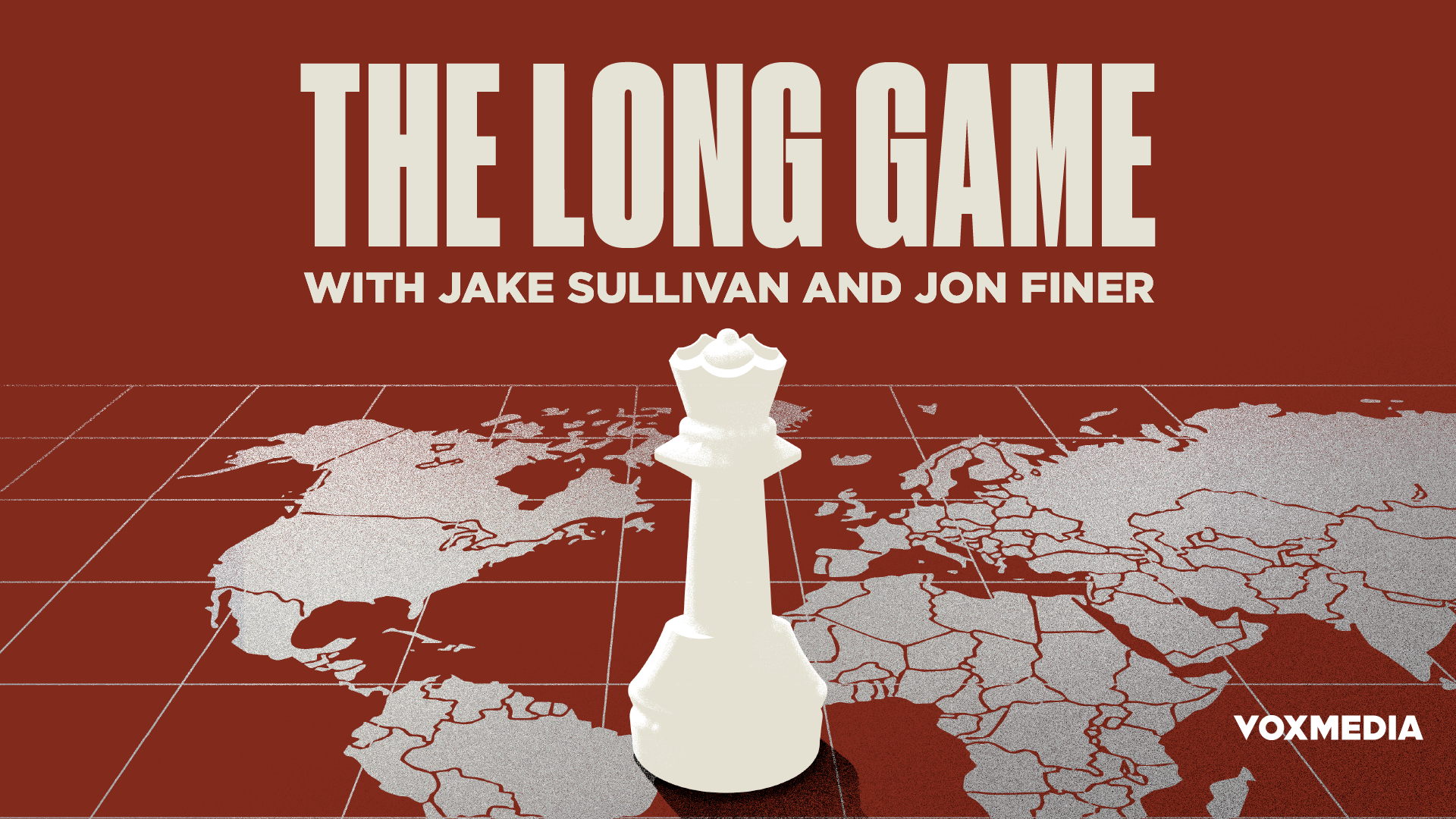As part of our continuing research on policy perspectives, consumers’ media diets, and how media consumption affects society, Vox Media commissioned a survey of ~2,500 subjects from January 10-14, 2021, in partnership with research firm SightX.
Our goals included:
- Assessing the extent of polarization on issues commonly identified as controversial
- Identifying areas of consensus regardless of political identification
- Charting a new path for media organizations to encourage responsible, active consumer engagement
- Articulating the role of the consumer in advocating for better discourse
As part of a media organization, we at Vox Media strive to hold ourselves and our teammates to high standards of ethics across our journalism and advertising. We encourage marketers to evaluate their media partners closely and frequently to ensure that advertisers are aligning with responsible dialogues, rigorous fact checking, and thoughtful perspectives. And, as consumers realize their agency in shaping the national narrative, we hope that they will also increasingly support media organizations that advocate for and practice high-quality journalism.
Below you can read more on our findings:
ON POLARIZATION
When asked, people have a muted perspective on their own polarization. While some may classify themselves as staunchly conservative or liberal, 70% of people would consider themselves middle of the road. This political spectrum, shown below, mirrors a bell curve and begs the question—Are we more polarized by our self-identified labels versus the issues that matter?
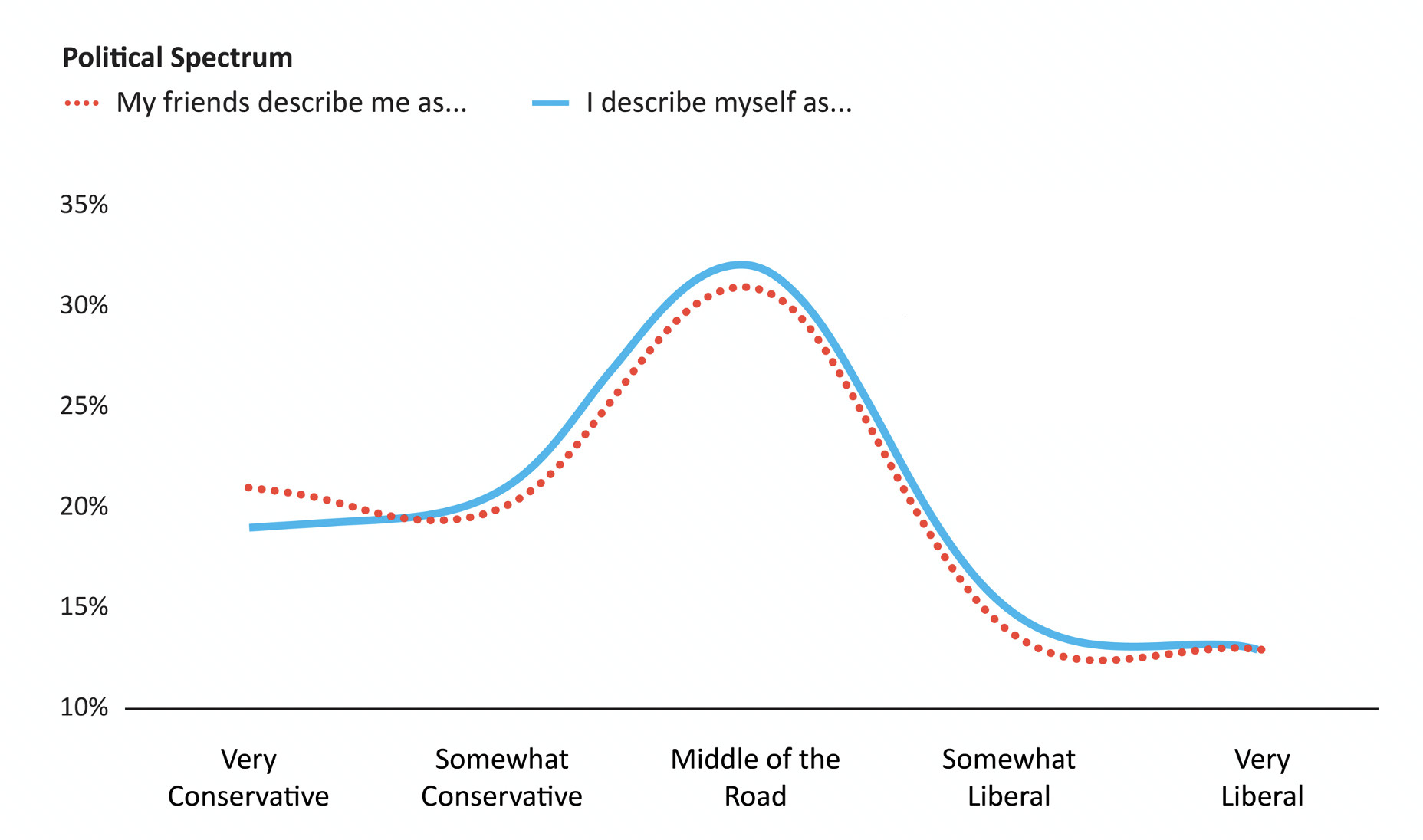
After looking at this data, Vox Media dug further and examined how people think about issues, whether that polarization impacts their desire for change, and the need for media to play a consistent role through responsible journalism.
ON POLICY ISSUES
There is no doubt that a wide gulf exists between the very liberal and the very conservative when it comes to political issues. However, the data below suggests that the majority of society fundamentally agrees on the pressing issues that the government should address.
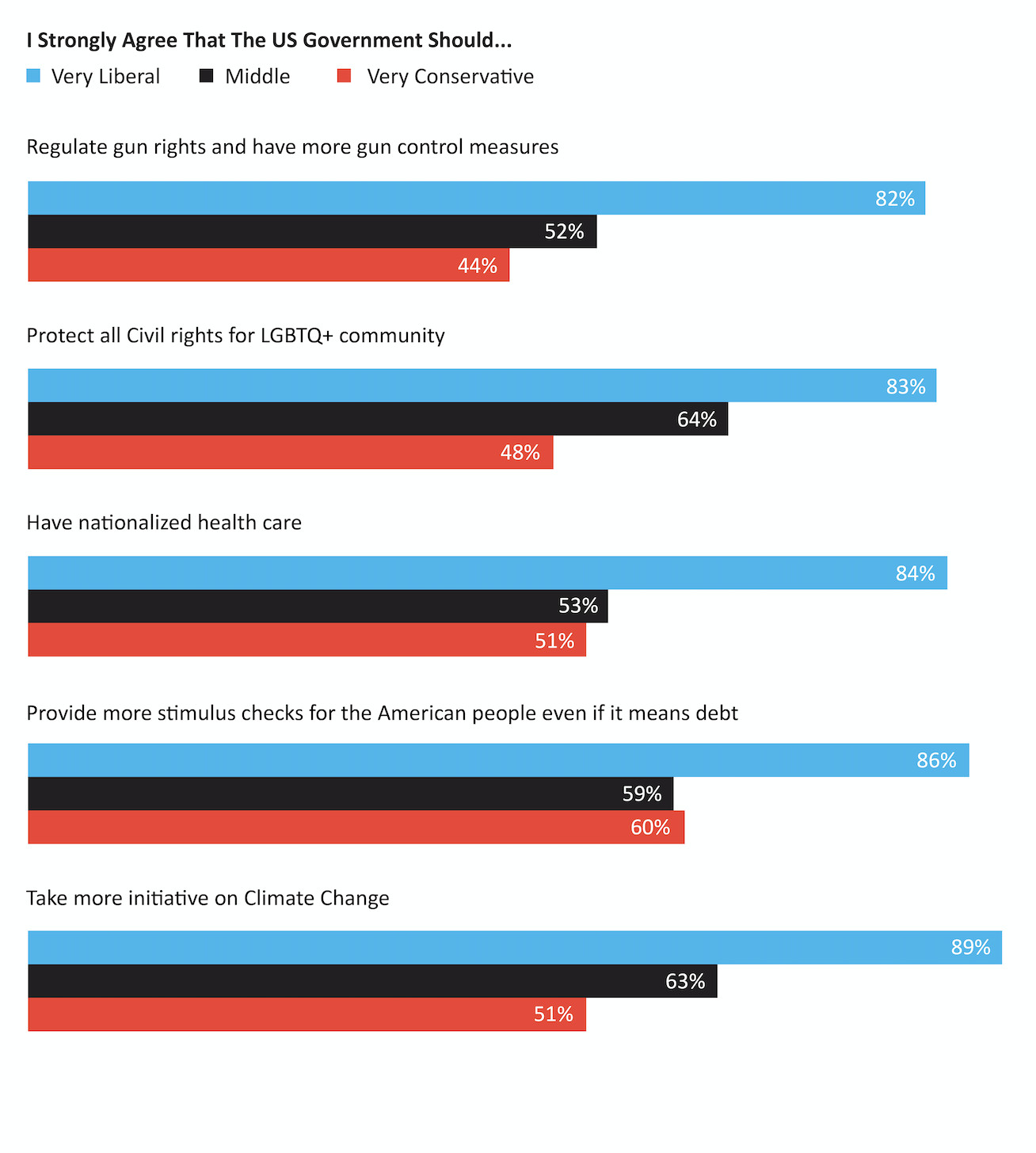
While we can see that there’s a large difference between very liberal and very conservative people, the majority agree that the US government should regulate guns, care about individual rights of the disenfranchised, create a national health care system, care about the climate, and do significantly more for the American people during COVID, even if it means we are going to go into more debt.
ON SOCIAL PLATFORMS
One of the critical components to polarization—or the perception that we are polarized—is the current media landscape.
When it comes to social platforms, consumers are quickly realizing their impact and role in furthering the divide. The following are some collected stats around platforms:
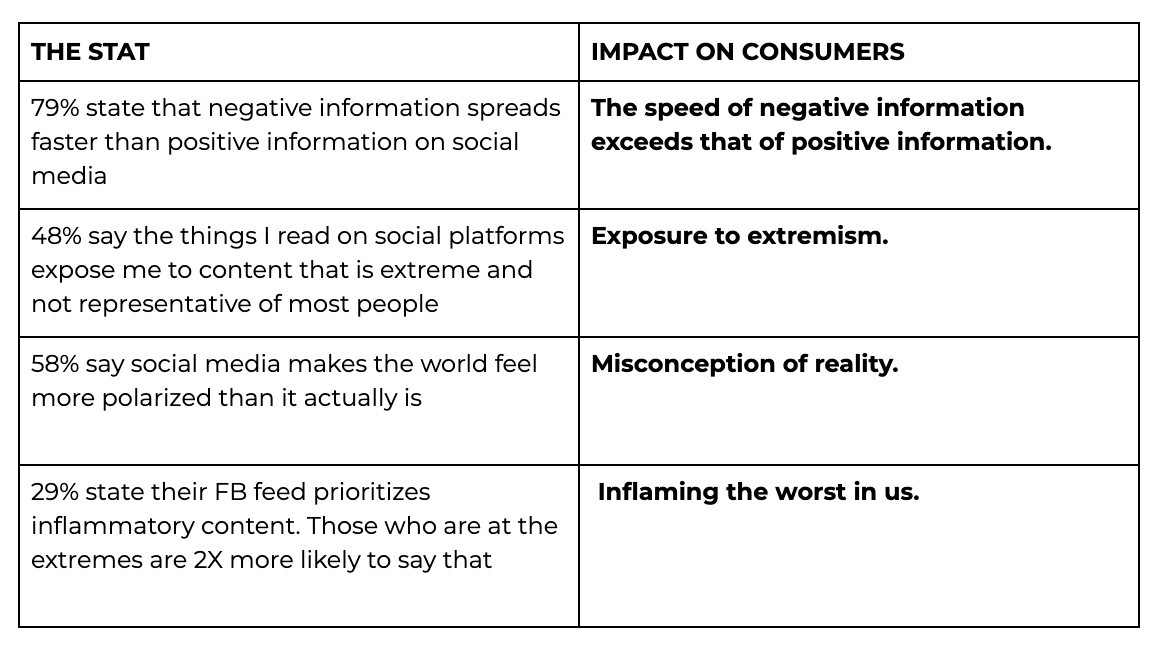
ON NEWS
News, in general, should also seek to foster constructive and caring conversation, as 50% state that news media is disrespectful to parties that hold different views and 43% state the news is mean to the other side. This in turn trickles down to our interactions. About ¼ of people stated they’ve been in a real or virtual shouting match as a direct result of the digital content they disagree about. For those that classify themselves as very conservative/liberal, that number actually increases to nearly half.
- 47% feel upset with the “other side”
- 44% say they trust people in the US, which means the majority actually don’t trust others in the US
- 35% believe society has left them behind. For the very extreme conservative/liberal, it’s closer to half
A FRAMEWORK OF UNDERSTANDING & ACTION
Our findings demonstrated that our actual differences of opinion, even on so-called controversial issues, are milder than they seem. Consumers perceive some news media and social platforms as contributing to our general sense of polarization, as well as accelerating the spread of negative information. We thought it might be useful to apply systems thinking to the problem in order to chart a way forward. Systems thinking is a holistic approach that seeks to understand how the individual parts of a system work individually, and how the interaction of those parts can drive overall change. In response to bridging polarization and driving systematic change, the following key elements would need to be addressed:
- Individuals become aware of how media contributes to polarization
- Individuals desire more structural changes promoting sustainable healthy content
- Individuals are willing to change our own behavior and accept responsibility
STRUCTURAL CHANGE: THE NEED FOR MORE SUSTAINABLE AND SUITABLE CONTENT
A critical component to finding common ground will be altering or improving our media diets. The hope is that consumer expectation will evolve into an expectation of better content from digital sources.
The new pillars of healthy content are as follows:
WE NEED PERSPECTIVE FROM PEOPLE WE DON’T AGREE WITH
- 77% enjoy content that shows both sides of the story
- 76% I think content that humanizes people I specifically disagree with is important
- 65% the news should differentiate between issues we disagree on and the character of the people
WE SEEK TRUTH AND OBJECTIVITY
- 74% There needs to be a stronger mechanism to verify truth of a headline before publishing it
- 68% I want content that is more objective than opinionated
WE WANT TO BUILD A BRIDGE AND CREATE COMMONALITY
- 67% we need to read and watch things that cover our common ground more often
- 60% state that when they disagree with someone about an issue, they seek content to try to learn about other’s POV
WE LOOK TO REFLECT NOT REACT
- 58% agree, The things we consume online should encourage reflection
BEHAVIORS: FUTURE FORWARD & READY TO COMPROMISE
As we look forward, we are all ready for a new, more promising perspective. This survey was done right after the Capitol Insurrection—90% of people stated the present and future are “most important,” with the majority towards the future as opposed to the present or past.
The entire sample of people, regardless of politics, stated their readiness to move closer to the center through compromise, congeniality, and common ground. Here’s what they all strongly agreed with:
- 76% believe in the importance of getting things done, even when they don’t get everything they want
- 73% stated it is important to compromise
- 68% believe in mutuality, give and take
BUT WHAT ABOUT THE REBUTTAL FROM EXTREMISM…
Funny enough, the people that we assume are the most entrenched—the very liberal and very conservative—are two sides of the same coin. They may hold very different viewpoints on a variety of topics, but are also significantly more likely to be seeking change. When looking at the data, they are significantly more apt to seek truth, establish a common ground, and desire time to reflect.
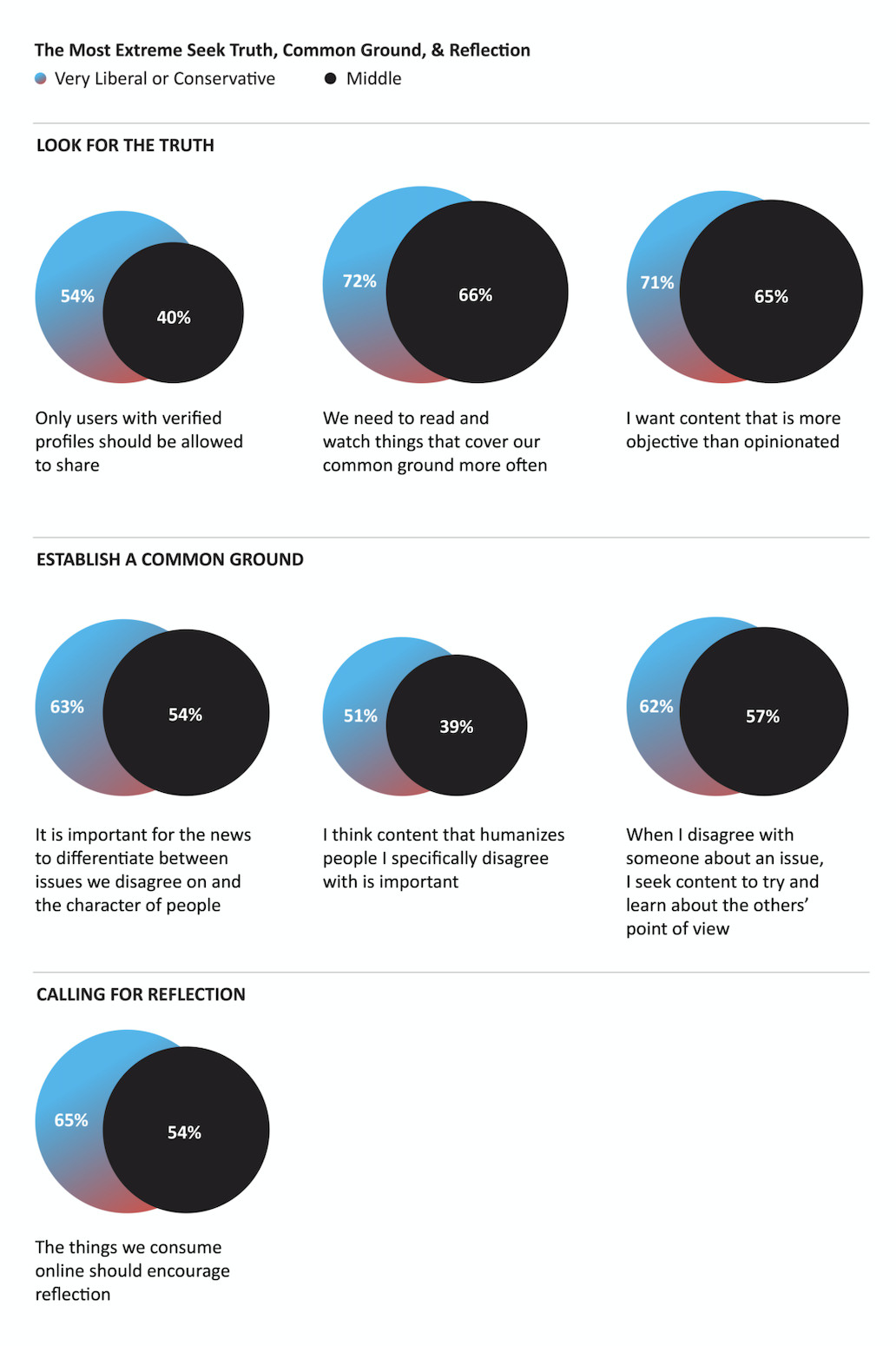
ULTIMATELY, THE RESPONSIBILITY FALLS ON US
As much as it’s easy to assign blame on media and platforms, consumers are reassessing their own responsibility.
- 47% agree that PEOPLE are more responsible than social media for the increased polarization of society. In fact, those who are very conservative or liberal are 20 points more likely to agree with this statement
- Consistently, 46% also agree that PEOPLE are more responsible than the news for the increased polarization of society.
With all this talk of polarization, it’s comforting to know that the majority of Americans, 50%, feel there is something nice to having a conversation with someone I might disagree with.
WHY THIS MATTERS TO MARKETERS
The intersection of brands, purpose, and human policy are at play here. There’s no marketing to the left or right, only marketing to humans that care about each other, especially around human policy issues.
Consumers are ready for the hard work ahead through compromise, congeniality, and common ground. How do companies promote that message?
Responsible and suitable marketing choices are going to be critical to drive perspective, objectivity, bridging differences, and reflection. Where you put your dollars can enhance or hinder our path forward.
As consumers begin to take more personal responsibility, how should we do the same as companies? Return on community should be a KPI for this time.
Methodology
A survey was commissioned to ~2,500 consumers January 10-14,2021. Our partner, SightX is a premium research partner, their goal to automate curiosity.
Edwin Wong is Senior Vice President, Insights & Innovation at Vox Media, the leading independent modern media company known for building the best media brands and the technology that enables them. He leads research to identify key trends in consumer behavior and help advertisers capitalize on these trends to effectively connect with their core audiences. He has been studying digital consumer behavior for nearly 20 years and has held previous roles at BuzzFeed, Pinterest and Yahoo.



